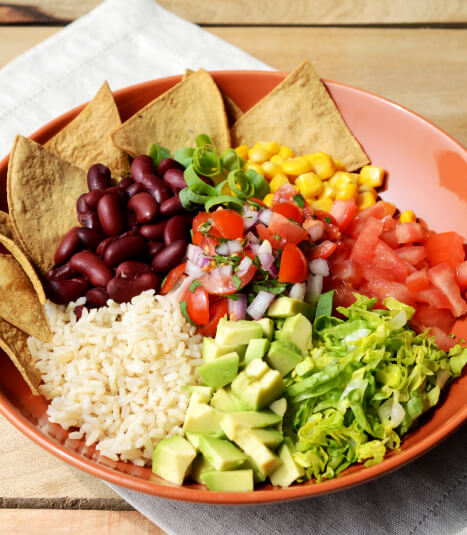Anemia
Anemia from Blood Loss: Diseases of the gastrointestinal tract that lead to loss of blood must be sought. The foods you choose to eat can provoke visible blood loss in the intestinal tract by causing diseases such as ulcers, colitis, diverticulosis, and hemorrhoids. Loss of blood undetectable by the eye can be caused by subtle injury from ingesting the wrong foods. Even though the amount of blood lost at any one time may be small, if this flow continues over a long period it can still result in significant anemia. One more common source of subtle and obvious blood loss in women is heavy menstrual flow.
Iron deficiency anemia is associated with low levels of the mineral iron in the body. People obtain iron from eating plants and animals that have been fed on plants, and absorbed it into their bodies through the upper gastrointestional tract. The amount of iron absorbed depends mostly upon the body’s needs. Absorption of iron (as well as of other minerals) is active, not passive. When the stores of iron in the body’s tissues are adequate, than approximately 5 percent of the iron present in the food is absorbed. If a person is iron deficient and, accordingly his needs are high, then the amount absorbed from the foods he eats increases to as much as 20%. In other terms, this absorption normally represents 1-2 mg per day, and up to 6 mg per day in iron deficient conditions.
Secondary factors also influence the absorption of iron from ingested foods. Absorption depends upon the acidity of the stomach, the amount of ascorbic acid (vitamin C) in the foods, the kinds of amino acids present, the amount of fiber in the diet, and the form in which the iron is presented (whether heme or non-heme). Ascorbic acid is one of the main enhancers of iron absorption, and fruits and vegetables provide plentiful amounts of this vitamin. All red meats, poultry, and fish are deficient in ascorbic acid. Dairy products are not only deficient in ascorbic acid, they are also very low in iron content, and actually inhibit the absorption of iron present in other foods (for example, calcium and phosphates in milk form insoluble complexes with iron). Coffee and the tannic acid in tea will also decrease absorption of iron from foods.
Recent concern has focused on the effect of the fibers in plant foods on mineral absorption. Fibers will bind minerals and decrease absorption. However, to date the concern is merely theoretical, since actual cases of mineral deficiency attributed to presence of fibers are rare to nonexistent. Furthermore, long-term study shows that vegetarians develop no deficiency in iron from their high fiber foods.
Iron deficiency anemia can also be caused by blood loss. In the United States, about twenty percent of the women of childbearing age are iron deficient. Women who eat the high-fat American foods have abnormally increased levels of estrogens in their bodies that cause a thicker build-up of endometrial tissues, the inside lining of the uterus. When this lining is shed at the end of each monthly cycle, bleeding from this overgrown endometrium is heavier and longer, and therefore more iron is lost than would be shed in periods of lighter menstruation. In men the most common cause of iron deficiency anemia is blood loss through ulcer, hemorrhoids, etc. in the gastrointestinal tract.
Another common source of iron loss is from microscopic bleeding in the intestine. Dairy products are most likely causes of this bleeding. This problem has been thoroughly studied in young children: milk products have been found to be the cause of more than half the cases of juvenile iron deficiency anemia. The problem has not been thoroughly studied in adults, yet some population groups and individuals have been identified as having iron deficiency anemia associated with the intake of dairy products. High fat foods–dairy products being a primary example–also increase menstrual blood loss by elevating estrogen levels in women (see hormone dependent diseases). I believe that someday dairy products will be recognized as the main cause of iron-deficiency anemia in adult women. Chronic Systemic Diseases: that produce anemia. The degree of anemia follows the course of the disease and the only effective treatment is elimination of the disease. Some such as rheumatoid arthritis and kidney disease can be caused by faulty diet and treated with correct diet.
The important question to answer is this: “Is the amount of iron in vegetable foods (and the absorption characteristics of iron) adequate to meet the needs of people eating little or no meat?” Many studies have looked at this question and consistently the answer is yes. Hemoglobin levels in vegetarians, which reflect the amount of iron in the blood, are comparable to those in people who eat flesh as a large part of their diet; and anemia has actually been found less commonly among people who eat vegetable based diets.
Runner’s anemia: More than 30 million long distance runners live in the United States today and many of them are developing iron deficiency anemia from no obvious cause. Several possible reasons for the loss of iron have been suggested: the destruction of blood cells when the feet hit the hard ground so frequently for so long a time, loss of blood through the kidneys, iron lost in the sweat, reduced absorption of iron from the gut, and decreased production of blood cells in the bone marrow.
Recent studies have found, blood in the stools of runners after a race, that was not present before the long run. Vigorous exercise shifts a great amount of the circulating blood to the muscles in order to help them do all that hard work, thereby depriving the intestines of 80% of their rich supply of blood. The poorly nourished, oxygen deprived inner lining of the intestines may suffer subtle injury in consequence, and bleed.
This type of anemia will not be corrected by taking iron supplements. A runner committed to this demanding sport must decide with his or her physician how serious a health problem the anemia represents. The evidence from only slightly abnormal laboratory tests may not call for giving up a favorite sport. Even so, this runner certainly should be checked periodically by a physician, with blood tests, if not more. A less vigorous form of exercise may be the only recommendation for many marathoners with iron deficiency anemia.
Recommendations
+-Look for the cause and correct it. If you have iron deficiency anemia of unknown cause (especially if you are a menstruating woman), change to a low-fat diet free of dairy-products. Try to detect and correct any chronic disease processes. Iron supplements may offer additional benefit early in treatment.
Find another sport if your anemia is caused by distance running.
References
+-Hamblin, T. Blood transfusions and cancer: anomalies explained? Br Med J 293:517, 1986
Dallman, P. Iron deficiency in infancy and childhood. Am J Clin Nutr 33:86, 1980
Morck, T. Inhibition of food iron absorption by coffee. Am J Clin Nutr 37:416, 1983
Anderson, B. The iron and zinc status of long-term vegetarian women. Am J Clin Nutr 34:1042, 1981
Abdulla, M. Nutrient intake and health status of vegans. Chemical analyses of diets using the duplicate portion sampling technique. Am J Clin Nutr 34:2464, 1981
Wilson, J. Studies on iron metabolism. V. Further observations on milk-induced gastrintestinal bleeding in infants with iron-deficiency anemia. J Pediatr 84:335, 1974
Murray, M. An ecological interdependence of diet and disease? A study of infection in one tribe consuming two different diets. Am J Clin Nutr 33:697, 1980
Buckman, M. Gastrointestinal bleeding in long-distance runners. Ann Intern Med 101:127, 1984
Recommended Articles

Fatigue

What Is the Life Expectancy with Heart Disease and Diabetes?







